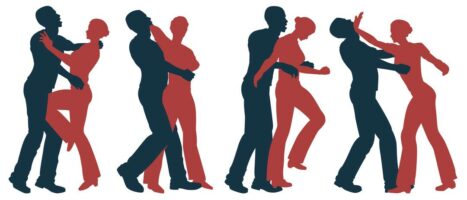Women’s self-defense, bystander intervention: both needed, but different

With the pandemic came an increasing number of hate crimes, particularly in relation to Asian people (and particularly women). The cluster of punch-and-run incidents in Boston’s Chinatown has unnerved a local woman, who asked for advice on a local Facebook group.
When she asked for help, several people suggested she take a bystander intervention class. As a teacher of bystander intervention, I disagree. She might benefit from a verbal self-defense class, but that is not her primary need. What she needs more, in my opinion is a women’s self-defense class.
Women do not need to be martial artists to be safe. There are classes available that teach women about posture, presentation, and situational awareness. These help women to look like someone who is not easily intimidated. It also helps women (or men) choose the safer walking route, choose the better places to stand in public places, and generally maintain the best physical position to defend one’s self or escape if hostility occurs. Everyone needs this; but women in targeted groups need it more.
Find a physical self-defense class:
- If someone tells you that you need years of skills training (e.g., Brown Belt in Karate) or intensive physical conditioning, move on unless you wanted that kind of conditioning anyway. Being strong may help you; being agile and mentally aware will help you more and longer throughout your life.
- Seek a women’s class (for women and smaller men or smaller non-binary people).
- Find a class that will talk about street safety and escape strategies. There are ways of walking, places to walk, and places to stand in public that are generally safer. Learning these things and choosing them, habitually, increases your safety.
- Seek a class that respects your body type. Women’s strength and center of gravity changes the dynamic during a physical attack. Knowing this can put you at an advantage if your assailant is bigger and stronger than you are.
- Seek a class that will teach you how to use available tools to protect yourself. Some classes teach how to use keys, or other items you often have on hand. Some show you how to effectively use mace or other non-lethal weapons.
I took three self-defense classes when I was in my 20’s. They covered these topics. Getting into the habit of knowing who is around you, in public, and knowing what to do if someone hostile approaches, can save you from assault.
It did for me. The only stranger who ever tried to assault me was identified to police by his bloody nose. How? He approached and tried to grab me. I put my grocery bags — which were in my hands — in front of me, then pushed him back. Then I swung the bags at him. He got a half gallon of orange juice in the face.
I was taught to use whatever was handy to keep a distance and hit back with whatever was handy; it worked.
Verbal self-defense
Verbal self-defense teaches people how to stand their ground and not be seen as agreeing to things they do not condone. It can de-escalate some situations. It works best in ongoing relationships and works less in conversations with strangers.
Bystander intervention
These are trainings for allies. They are designed to give allies the confidence to come forward to assist someone who is being targeted. There are roles in intervention that draw on different skills. People who want to be most effective draw on their strengths. Not everyone needs to do the same tasks.
Someone who is concerned about being a target will learn some things by taking this course: how to effectively ask for assistance, how to position one’s self in the safest possible place during he encounter, and what are the quickest ways to deescalate a public hostile encounter.
I have my own Active Bystander Intervention curriculum where I teach two topics: verbal self-defense and active bystander intervention. The first class was taught online throughout the pandemic, but the second class involves practicing physical activity and couldn’t be done with social distancing. I haven’t taught it since the fall of 2019. I taught the Quabbin Mediation Training Active Bystanders class just last month; their curriculum is adapted to online teaching.